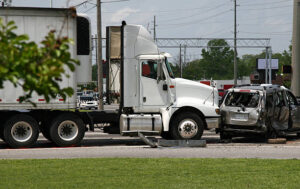WASHINGTON, D.C. — Gasoline, diesel, natural gas and propane continue to be the primary fuel and technology choices for America’s commercial trucks, transit and school buses, with the population of advanced technology near-zero emissions diesels increasing four percent over 2022, according to the Engine Technology Forum (ETF).
“As more of the nation’s trucking fleet adopts the latest generation of advanced diesel and natural gas technology, communities are experiencing cleaner air and lower greenhouse gas emissions,” said Executive Director of the Engine Technology Forum, a not-for-profit educational association, Allen Schaeffer. “And truckers save on their fuel expenses, too. Previous research showed the significant climate, fuel savings, and clean air impacts in the US of the newer generation (2010 and later model year) of advanced diesel in Class 3-8 heavy-duty trucks. From 2010 through 2030, this generation of diesels will save approximately 1.3 billion tons of carbon dioxide emissions, 130 billion gallons of fuel, yield a cumulative savings of one million tons of particulate matter and 18 million tons of nitrogen oxide emissions. These benefits will be even greater once new emission regulations are implemented for new vehicles starting in 2027.”
ETF’s analysis of S&P Global Mobility TIPNet data of US Commercial Vehicles in Operation as of December 2023* found that 99.9 percent of the nation’s commercial vehicles, from small white box delivery trucks on up to the largest 18 wheelers, are powered by internal combustion engines. Diesel makes up the largest share at 76 percent, followed by gasoline at 22 percent, then natural gas and propane.
As of December 2023, 61 percent of all commercial diesel trucks on the road were 2010 and newer model year (2010 + MY) vehicles. That’s a four percent increase from 2022. They are equipped with the latest emissions controls to help them deliver near-zero emissions. California has the fastest growing population of advanced technology diesel vehicles in operation with a 13.3 percent increase compared to 2022.
“While traditional petroleum-based fuels still dominate the vehicle sectors, the role of renewable fuels is growing. It’s especially important given the opportunity to deliver significant carbon and other emissions reductions across millions of internal combustion vehicles in operation,” said Schaeffer.
In 2023, more than 2.8 billion gallons of renewable diesel and 1.9 billion gallons of biodiesel were consumed. Both are low carbon fuels. Renewable diesel fuel production capacity could reach 5.9 billion gal/y, by the end of 2025.
According to the Transport Project, more than 79 percent of the natural gas (CNG) used in transportation in 2023 was renewable natural gas (RNG). In California, according to data from the California Air Resources Board, Bio-CNG/RNG achieved an annual average carbon intensity score of -126.42 grams of CO2 equivalent /Mega Joule (gCO2e/MJ) for 2023, which is the lowest carbon intensity score of any clean fuel option.
“As the timing and degree of transition to alternative vehicles and fuels remains in flux, the importance of continued investment in new technology ICE vehicles is vital to ensure continued
progress on clean air and climate commitments,” Schaeffer said. “Replacing older vehicles with new advanced ICE technology delivers substantial benefits. It would take more than 60 of the current generation diesels to equal the emissions of a single heavy-duty diesel truck built in the 1990’s.”
Vehicles fueled by electricity – battery electric or fuel cell – make up 0.1 percent of the commercial truck population. Of the nation’s largest trucks, Class 8, tractor-trailer size, 97 percent are powered by diesel. For all diesel trucks Class 3-8, 61 percent of these are equipped with the newest, most advanced, diesel technology that achieves near zero tailpipe emissions standards established by the U.S Environmental Protection Agency.
“About two-thirds of all commercial trucks in operation are equipped with advanced emissions control equipment at this point, so we can see their contribution to substantial progress toward key state’s clean air and climate goals, and the opportunity to do more with accelerating fleet turnover,” Schaeffer said. ”Communities realize almost immediate clean air benefits. Greenhouse gas emission reductions benefit everyone. And truck owners save some fuel money. It’s a win-win situation.”
Continued improvements for internal combustion engines (ICE) in the form of even nearer-to-zero emissions and lower fuel consumption are on the horizon. Engine and vehicle manufacturers are working toward meeting the most recent emissions regulations for both light and heavy- duty vehicles. Advanced diesel trucks are expected to deliver the overwhelming majority of clean air and greenhouse gas reduction benefits in the near term while zero emission vehicles are expected to play a greater role in the later years of phase 3 rule implementation 2027-2032.
“While battery electric and hydrogen options develop, along with their fueling networks, internal combustion engines are expected to dominate our goods movement and public transport sectors for decades to come,” said Schaeffer. “That’s why continued innovation, having the newest generation of these vehicles in place, and expanding our use of renewable fuels will ensure continued progress as well as lower the burden of greenhouse gas emissions reduction in the future.”
Emerging zero-emissions technologies, including battery electric and fuel cell electric vehicles, presently make up a small fraction of the commercial vehicle fleet. In this analysis, the largest portions of vehicles powered by electricity in the studied population are transit buses (7.8 percent EV), followed by school buses (0.4 percent EV). Electric-powered commercial trucks (Class 3-8) account for over 20,000 units, while school buses powered by battery electric technology account for about 2,000 units.
With 82 percent of class eight diesel trucks in operation now being advanced generation (2010 +MY) technology, Indiana leads the nation for diesel trucks, followed by the District of Columbia (72.8%), Pennsylvania (72.5 percent), Illinois (68.9 percent) and Oklahoma (68.8 percent). (The full ranking of states can be found at www.enginetechforum.org)
California leads all states in the adoption of EV technology in commercial trucks, non-school buses, (transit, inter-city buses) and school buses. For commercial trucks alone, California accounts for more than 25 percent of all EV commercial trucks in operation, followed by Pennsylvania, Washington, New York, and Massachusetts.
Additional Findings
The newest generation advanced diesel trucks (2010 + MY) outnumber electric trucks (any model year) 367:1
For every electric Class 8 truck in operation (any model year), there are 240 new generation (2010+MY) advanced technology diesel trucks
For every electric transit bus in operation (any model year) there are more than 5 new generation (2010+MY) advanced technology diesel buses
For every electric school bus in operation (any model year) there are 155 new generation (2010+MY) advanced technology diesel buses
Note: *S&P Global Mobility TIPNet Commercial data is based on snapshot taken Dec. 31, 2023








